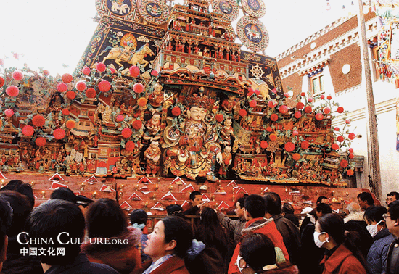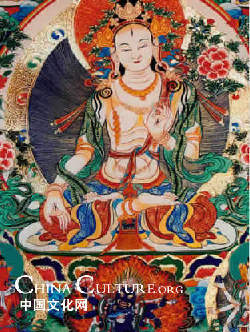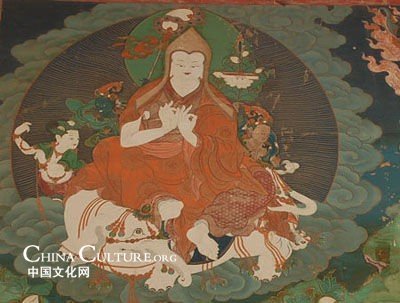|

In a group of butter sculptures, a pavilion, a Buddha or an arhat may be as high as several meters; and a flower, a bird, an insect and a fish may be as small as three to five centimeters. All of them are lifelike.
Deformities begin appearing above 15 degrees Centigrade and the sculptures begin to melt at 25 degrees Centigrade. With a view of guaranteeing the quality, the monks need to dip their hands in freezing water from time to time. This is why they tend to suffer from arthritis and some become crippled. Their contribution to Buddhism is really incredible.
Mural paintings
The Tar Monastery contains countless murals. There are numerous large-sized colorful and vivid mural paintings in the Great Temple of Golden Tiles, the Great Scripture Hall and the Small Scripture Hall.

The murals are done directly on walls and beams, but in most cases on fabrics. A kind of stony mineral dye is used in painting to keep pictures fresh for hundreds of years.

The murals are rich in content and elegant in style. Most of them depict Buddhism stories. Figures in the murals are in different postures, looking extremely true to life. The pictures of the image of flying Bodhisattva clad in transparent fine gauze are the masterwork among the temple murals. Mountains and rivers, flowers and trees, pavilions and terraces fit well together, displaying a serene landscape.
|



